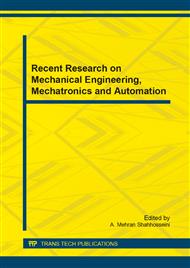p.253
p.259
p.271
p.275
p.281
p.287
p.292
p.298
p.303
Design and Research on Ballast Anti-Heeling System for the Crane/Pipe-Laying Vessel Based on DP3 Requirements
Abstract:
To ensure the stability of the crane/pipe-laying function in different working conditions, the redundancy of ballast system of a certain crane/pipe-laying vessel is designed according to the relative requirements of the third class dynamic positioning (DP3) in regulations and the characteristics of the vessel arrangement. The DP3 requirements of the redundancy of ballast system for the vessel are satisfied by means of the arrangement of ballast pumps and the redundancy configuration of the piping systems. Simultaneously, the ballast anti-heeling system is able to fulfill different working conditions.
Info:
Periodical:
Pages:
281-286
Citation:
Online since:
July 2014
Authors:
Price:
Сopyright:
© 2014 Trans Tech Publications Ltd. All Rights Reserved
Share:
Citation:


